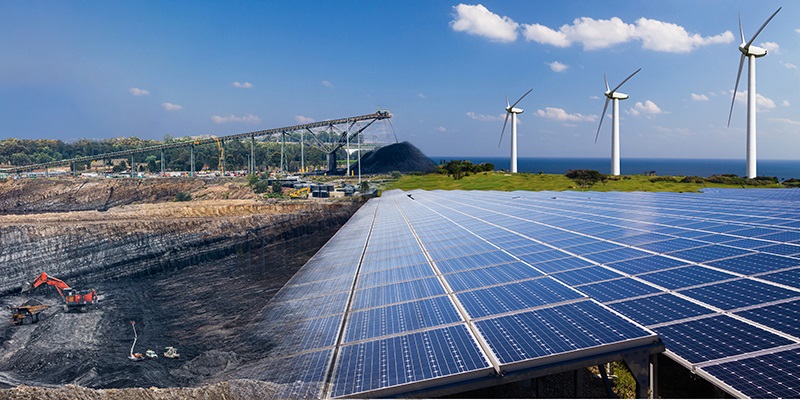Amazon Announces its First Brownfield Renewable Energy Project on Abandoned Coal Mine

Amazon announced today that it has invested in 78 new solar and wind energy projects so far this year, including its first brownfield project built on a brownfield, built on a site abandoned due to industrial pollution.
The new brownfield project, Amazon Solar Farm Maryland–CPV Backbone, is being built on the site of the recently closed Arch Coal Mine in Garrett County, Maryland. The 120-year-old mining site was previously contaminated with more than 45 acres of coal refuse, which has since been reclaimed.
Once completed, the project is expected to be the largest solar farm in Maryland, featuring more than 300,000 solar panels, and avoiding more than 133,000 tons of CO2 each year, according to project developer Competitive Power Ventures (CPV).
The U.S. EnvironmentalEnvironmental criteria consider how a company performs as a steward of nature. More Protection Agency (EPA) estimates that there are more than 450,000 brownfields in the U.S., which is an emerging opportunity for solar energy projects. Brownfields—which can include abandoned factories, mines, or landfills—are often located near power lines and public roads, making it easier to connect a project to the grid and turn unused land into an economic opportunity for local communities.
Since 2020, Amazon has purchased more renewable energy than any other company, according to market research firm BloombergNEF. The company now has a total of 479 wind and solar projects globally, and once operational, they are expected to generate more than 71,900 gigawatt-hours (GWh) of clean energy each year,.
The clean energy generated by the projects is moving Amazon closer to powering its operations with 100% renewable energy by 2025, including Amazon Web Services (AWS) data centers, Amazon fulfillment centers, physical stores, and corporate offices, while also providing new sources of clean power to local communities where the projects are located.
Adam Selipsky, CEO of AWS said:
“More than 90% of our operations were powered by renewables last year, but we’re not done. We’re focused on continuing to find innovative ways to bring new projects online, address grid constraints, and work with policymakers to mitigate the impacts of climate change, all of which is helping Amazon move closer to achieving 100% renewable energy by 2025.”